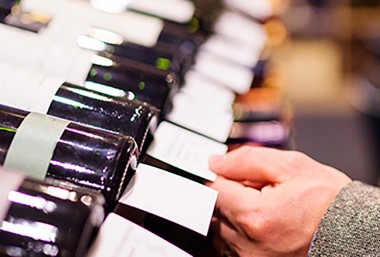Health advocates in Australia are actively lobbying for advertising bans on alcohol. John Hackett discusses the threat this poses to trade mark owners.
The anti-alcohol lobby in Australia is posing a major threat to the rights of New Zealand trade mark owners. Health advocates in Australia are now turning their attention to the alcohol sector. The upshot of this could see the imposing of plain labelling on wine bottles, which would seriously affect the legitimate rights of wine producers to use their valuable trade marks to distinguish their wines from those of their competitors.
The Australian situation
After tobacco companies failed in their High Court constitutional law attack on the Australian Plain Labelling Act 2011, health groups are actively lobbying for advertising bans on other sectors such as alcohol and snack food products - adversely affecting owners of trade marks in these industry sectors.
The Attorney General, after the tobacco industry challenge failed, issued a press release containing a statement that the government would not be looking at plain packaging or labelling for the alcohol or snack food industries. However, it is clear that policy in the health sector is influenced more by the health lobby and by long-serving government administrators. More of the "yes minister" approach.
The High Court precedent on tobacco plain packaging is not a good omen for the wine industry in Australia (or New Zealand) should the government of the day introduce plain labelling legislation for alcohol. It would mean that wine producers would have a severely limited opportunity to display their branding and imagery on wine labels - an essential element of the legal rights conferred by trade mark registrations.
This represents a clear danger to intellectual property rights where health advocates seek a new "target".
If the tobacco industry's pro-IP lobby couldn't sway the government in Australia, it's highly unlikely the wine industry lobby would be able to exert any influence.
No point of difference
At the same time, Australian health authorities have pushed for the use of graphic health warnings in the alcohol sector. A wine label, for example, has only a very limited amount of space as it is to differentiate its product from those of its competitors, as well as explain the origin of the wine.
In the United States, last month, the courts decided in favour of tobacco companies against the compulsory use of graphic health warnings on cigarette packaging. However, this is only a persuasive precedent for the Australian and New Zealand courts to follow, and not a binding one.
The right or privilege argument
A Private Member's Bill prohibiting 'other promotional activities aimed at assisting the sale of alcoholic beverages' has just been introduced for its first reading in NSW (Alcoholic Beverages Advertising Prohibition Bill 2012). Incidentally the same private member was successful in having legislation banning cigarette advertising pass through both Houses of Parliament to become law.
The bill confirms there is widespread support for a prohibition on advertising alcoholic beverages across Australia. It encourages education; reduction of alcohol-related deaths and injuries; and prevention of alcohol-related illnesses.
The introduction of this bill is a clear indication that health advocates in Australia are moving against the alcohol (wine) sector in the same way as the initial move against advertising in the tobacco industry. It seeks to prohibit advertising across the board of alcohol products.
At the same time, it would mean that the trade mark rights conferred on owners by virtue of registration would become a privilege as opposed to a right - simply put, it is something that can be taken away through the government legislating against particular industry sectors.
While it is only a bill at present, the question to be asked is whether this is the thin end of the wedge for legitimate intellectual property rights owners in New Zealand, and in particular New Zealand wine producers.
An edited version of this article was published in the National Business Review, 21 September 2012.



